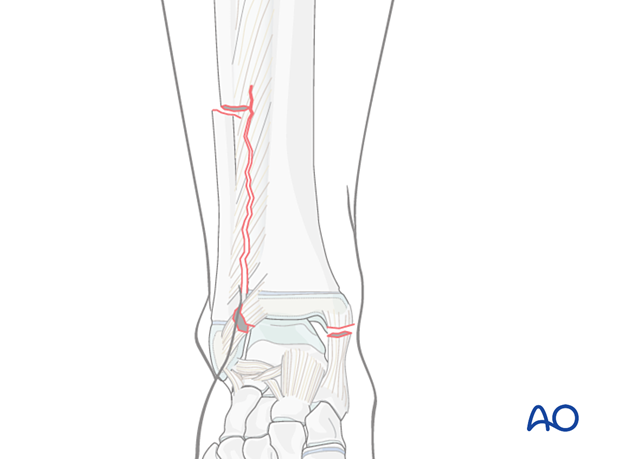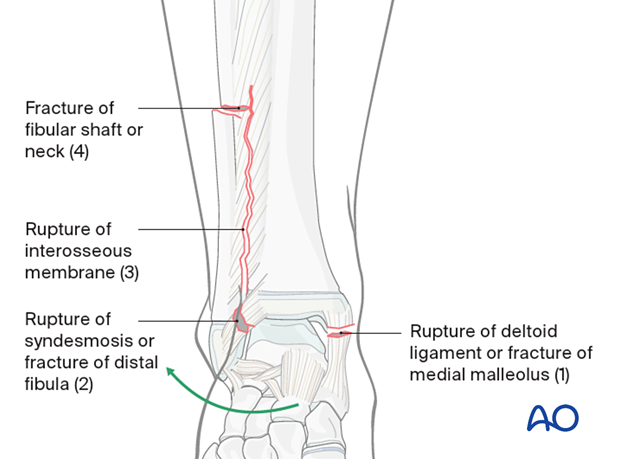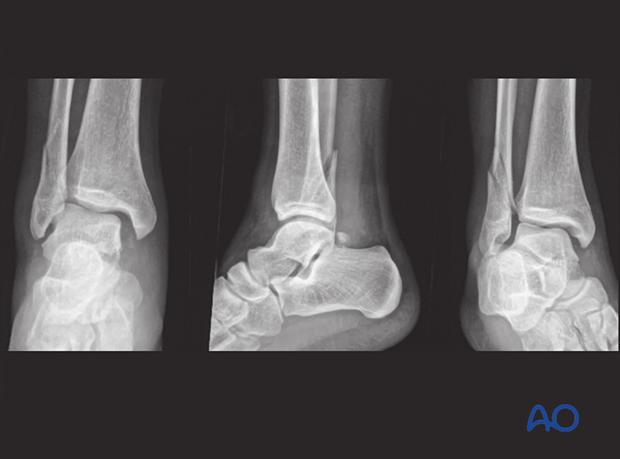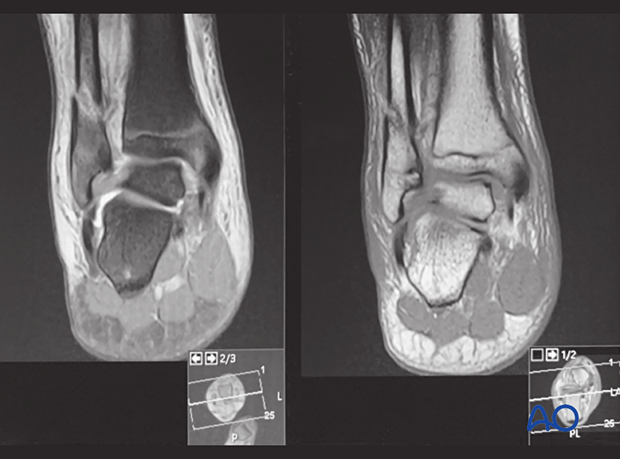Syndesmotic injuries
Definition
Syndesmotic injuries involve the inferior tibiofibular joint and interosseous membrane.
These injuries are rarely seen in patients with an open physis.
They are often associated with medial distal tibial and proximal fibular fractures and are usually unstable.

Further characteristics
This injury is caused by eversion/external rotation the sequence of injuries is predictable.
- The medial malleolus is fractured, or the deltoid ligament is ruptured
- The talus is then displaced laterally and abuts on the fibula, causing a fracture of the distal fibula or rupture of the syndesmosis
- Continued force may cause extension of a syndesmotic injury into the interosseous membrane ...
- ... and fibular shaft or neck fracture
Injury of the syndesmosis with a fibular shaft or neck fracture is called a Maisonneuve injury.

Imaging
An ankle mortise view demonstrates displacement of the tibiofibular joint and/or lateral shift of the talus with an associated medial injury.
The intraoperative stability of the tibiofibular joint must be checked with an image intensifier.
X-rays showing a syndesmotic injury with an associated metaphyseal fracture of the fibula in a 14-year-old patient

MRI of the same case














